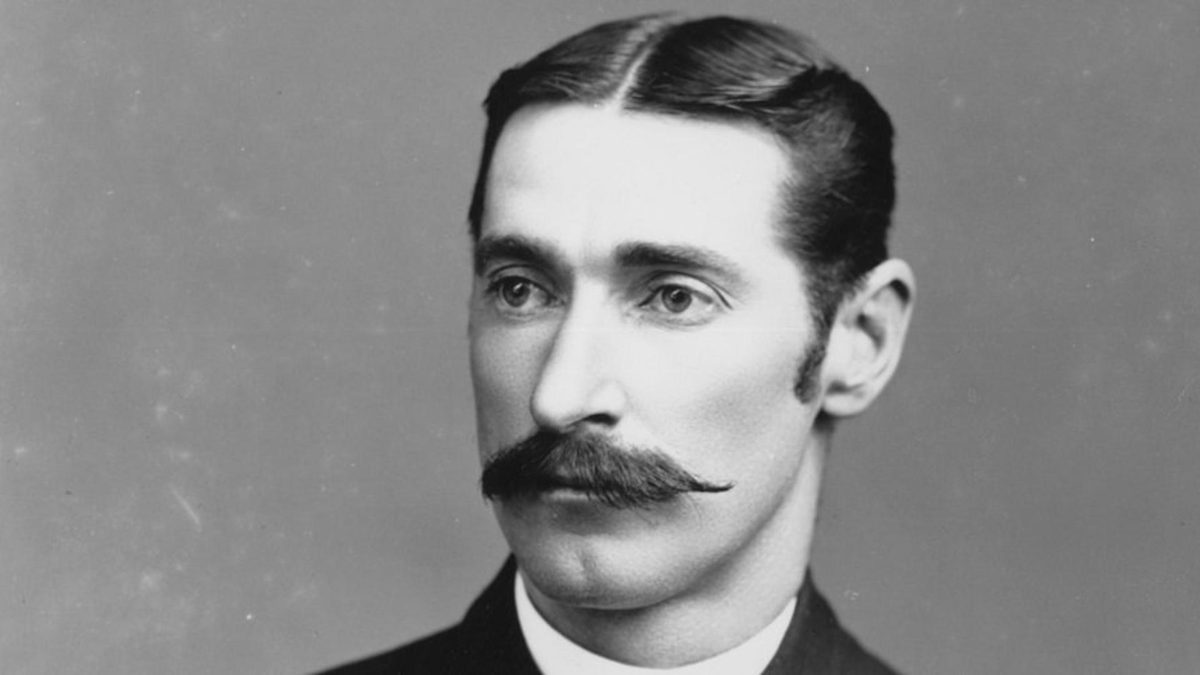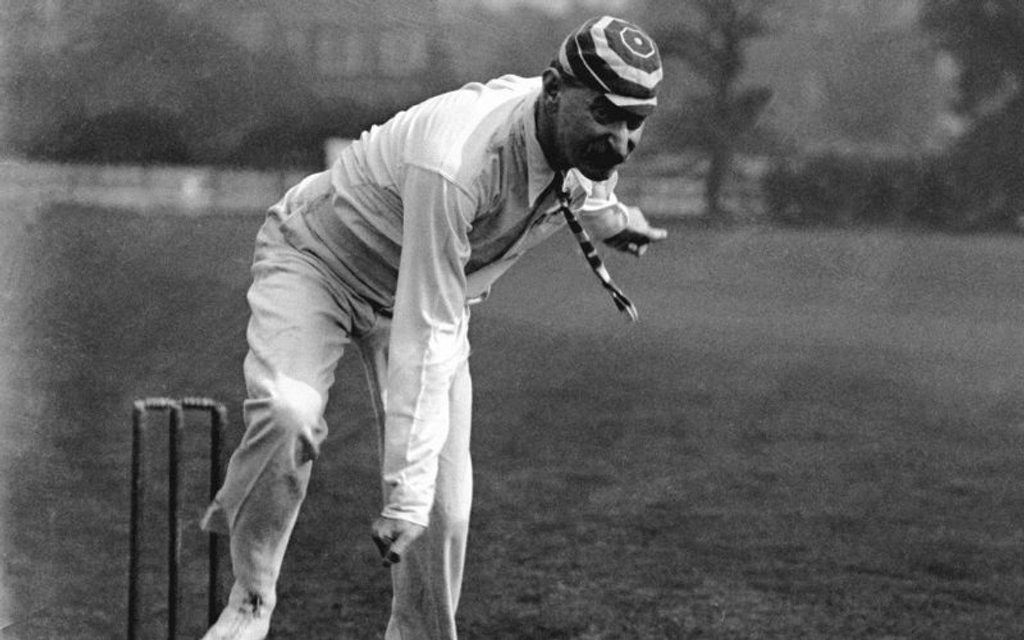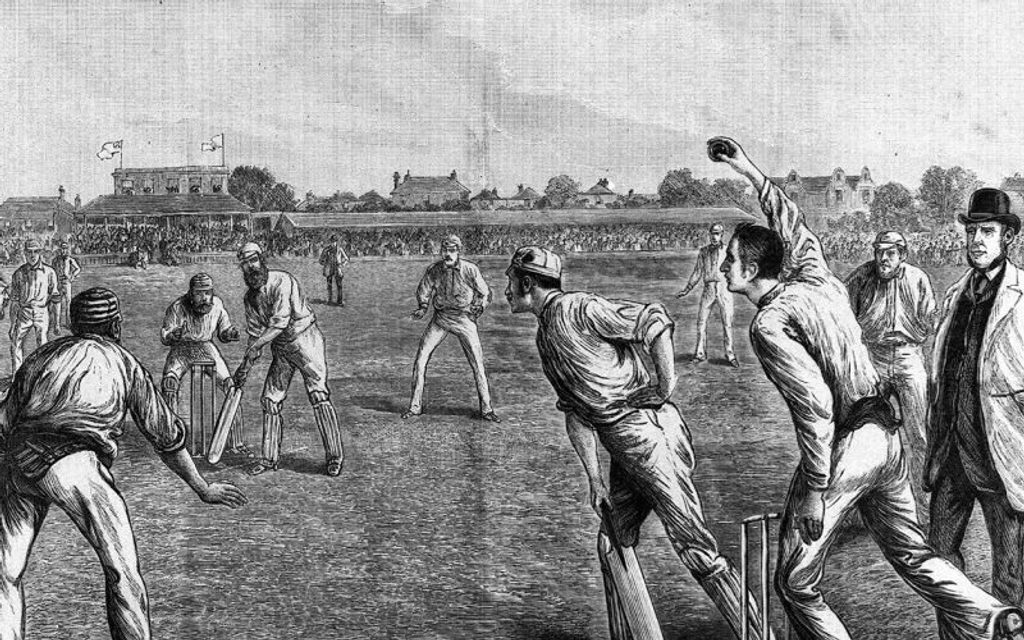
The death of Frederick Spofforth in 1926 gave Wisden the chance to ask key figures from cricket’s pioneering years to assess his place in history.
Lord Harris
I was talking to Mr Noble early in the season at the Oval, and he told me that Fred Spofforth was seriously ill, and then put to me the astonishing question, ‘Was he a great bowler?’ It was about equivalent to asking if W.G. was a great bat. ‘About the best I ever played, was my reply; but did you never see him?’ It was another shock to find that Noble, with whom I had never played, had never seen him bowl.
Later on, I went down to see Spofforth, and we had a chat about old times; he was keenly interested in past as well as present times, but as I left the room he said, ‘The doctors say I shall see the First Test match; but I made my reputation in May; you knocked me out in May; and I shall go out in May.’ He actually passed away in the first days of June.
Now what he described as my knocking him out, was a very curious coincident. If anyone cares to look at the Cricket Records of 1885 and 1887, he will find in Australians v Gentlemen of England, at Lord’s, in 1884: F.R. Spofforth absent 0, and absent 0, and in 1886, F.R. Spofforth retired hurt 0, and that he did not bowl at all in the second innings.
I have recorded in A Few Short Runs, and I can but repeat that on each occasion I hit a ball back which injured his right hand; and he always said that he was never the same bowler after the second injury. He followed up his ball very far, and as I probably jumped in, he was very close, too close to put his hand in exactly the right place; else he was ordinarily a very good field to his own bowling, but so full of nerves, that a hard blow made more difference to him than to many.
An amusing illustration of this sensitiveness occurred at Canterbury, in 1886, in Kent v Australians. I was in with G.G. Hearne, who would always run at a nod from me. Old Spof had been rather upset about the wicketkeeping; a ball was thrown in badly from long field, which hurt him; he went dancing about wringing his hand, at last danced on the opposite side of the wicket to where the ball was lying close to the wicket, and we ran, much to the amusement of the crowd.
 Spofforth took 94 wickets from 18 Tests at a mighty impressive average of 18.41
Spofforth took 94 wickets from 18 Tests at a mighty impressive average of 18.41
It is a common misconception, amongst those who did not see or play him, that he was a very fast bowler. He may have been in Australia before his first visit to England, in 1878, but he was far too knowledgeable on our slower wickets, and 1878 was little better than a mud lark, to depend on pace. He could bowl a very fast ball, and did, as often perhaps as once an over; but what he depended on was what he termed the judgement ball; medium pace, but with great variety of pace, and therefore of flight, and a strong break from the off.
He could break slightly from leg, I believe, though I cannot remember his doing so; and the rumour went round amongst us who had to face him for the first time, that if he was going to break from the off, he held the ball at the tips of his fingers; if from leg, in the palm of his hand. In my opinion what deceived the batsman, was that he came up at a great pace and then bowled a much slower ball than his pace up to the wicket led one to expect.
Consequently the batsman played rather too quickly, cocked the ball up a bit, and he was so close up, and judged the direction the ball would come off the bat so well, that he brought off the catch and bowl very frequently; and if it did not come off in his direction, the break would take it round to silly mid-on, where Boyle was waiting for and seldom missed it. Indeed, with Spof bowling, Blackham at the wicket, and Boyle at short leg, the forward type of play on slow wickets almost certainly led to disaster. That he was a great bowler cannot be disputed, his performances on the tours he took part in were astonishing, as shown elsewhere in this volume.
There were two signs which pretty clearly indicate what the public thought of him; his title The Demon Bowler; and that he was singled out amongst cricketers for a cartoon in Vanity Fair. In after years there were quite a number of cricketers similarly honoured by that paper, but in his day it was a rarity.
I have said that he came up to the wicket very fast, and he followed up straight down the wicket, thus, left foot on or about the popping crease, right foot well on to the half-volley pitch, and then both feet plump on the awkward pitch; and when wickets were soft, he undoubtedly made a mess of the pitch. In those days we were not so particular as cricketers are now; we took such happenings as the rubs of the game; but in his case we used to remonstrate, and Spof’s indignation was deep seated and high voiced. Look at my heels, no spikes, was his retort; which was true, but the heels were high.
At Sydney in 1878/79, we had made a very good start. I was in, and could not imagine why they did not put Evans, a most accurate bowler, on to bowl at the hole Spof had made. At last they did, and I said to Murdoch, who was keeping wicket, ‘This innings is over’, and we were out for some 40 more. Evans kept on finding the broken spot. He was much more thought of than Spofforth in Australia, and was a much better cricketer all-round; but was not successful when he came home, partly due to ill-health.
Spofforth was of no great worth as a bat, and was never conspicuous in the field; he seemed to concentrate on his bowling, and I think did really study his opponents’ weak points, and work at them; and in after years it was interesting to get him to talk about his performances, which, when we met at Lord’s, he was quite ready to do.
I was playing for ten years abroad and at home against those great medium-pace Australian bowlers, Allan, Garrett, Palmer, Giffen, Turner, and Ferris, as well as Spofforth, and I have of course also played such great English medium-pace bowlers as Alfred Shaw, Watson, Jim Lillywhite, Lohmann, C.T. Studd and W.G. Grace, and I am quite satisfied and always have been, that Spofforth was the most difficult of them all, because he concealed so well the pace of the ball.
What he could have done on the easy wickets of the present day, no one can say, but I am sure he could have adapted his bowling to them; and does it matter? What we must judge performances by are the circumstances and conditions of the time when they were done, and taking those as the criteria, I do not see how any bowler can be held to be better than was F.R. Spofforth.
Ivo Bligh
I well remember the first time that I encountered the Demon bowler – in the Cambridge v Australian match, at Lord’s, in 1878. We had all been warned by our captain, the Hon. Edward Lyttelton, who had, I think, recently made a big score against the Australians, to watch Spofforth’s bowling hand as he came to the wicket. If the wrist was bent, one was to expect a slower ball with break back; if the wrist was straight, a very fast ball, and not improbably a yorker.
In some of the accounts recently published of Spofforth’s bowling it was said that he was never a really fast bowler. I believe this statement to be quite incorrect. If my memory does not deceive me, there were two very distinct stages in his bowling. When he first came to England in 1878, his bowling was very fast indeed, almost as fast as the fastest we have seen, with occasional very well disguised slower ones, which were very deceiving to the batsman and caused many a premature forward stroke and retirement of the batsman – caught and bowled and bowled.
After 1878 he greatly moderated his pace, and relied more on the fast-medium ball of wonderfully good length and considerable break back, with the occasional variation of the very fast one, including a particularly deadly yorker.
I should imagine that the nickname of Demon arose from the terrifying aspect of his final bound at the wicket when delivering the ball – long lean arms whirling through the air from a commanding height, and a long stride coming down with great force and damaging effect on a very awkward spot for a breaking-back ball bowled from the other end. The long arms seemed to be whirling round at much the same speed whether the ball was coming fast or slow, and he had practised these disguises of pace to great perfection.
 An illustration depicting Fred Spofforth bowling WG Grace during the famous Oval Test of 1882
An illustration depicting Fred Spofforth bowling WG Grace during the famous Oval Test of 1882
Some of his bowling success may be traced to certain physical attributes of an unusual character – very tall, 6ft 3in, broad shouldered, but unusually lean and sinewy and carrying very little weight. A year or two ago, he told me that at his best he only weighed 11st 7lbs. His early life on horseback in the Australian bush gave to him the lasting power which made him incomparably the best stayer of any fast or medium-pace bowler that I can remember.
Though of so comparatively light build, he was exceptionally strong, and one of his feats was to support Bonnor, weighing over 16st, on the calf of his leg, held horizontally backwards at right angles to the upright leg – no mean feat. He and Bonnor were the two fastest hundred yards runners in the Australian elevens of those days, one weighing some 5st more than the other.
In addition to these physical features, no bowler that I ever saw had a more graceful, spacious sweep of the arm, and his delivery gave a most satisfactory sensation of perfection of pace and power combined. Unlike most of the modern fast bowlers, his run up to the wicket was only of average length, and his pace and power owed nothing to the impetus of an abnormally long run.
One of the very best bowlers that the last 50 years have seen, unquestionably; possibly the best of all. A cheery and amusing companion, withal, amongst his fellow cricketers. Fond of a good story, and, like many of his compatriots, not inclined to understatement. His old cricketing friends will cherish a very kindly recollection of his unique personality.
CI Thornton
I first met F.R. Spofforth on the Orleans Club ground at Twickenham where the Australians of 1878 met a team which I had got together. My side included I.D. Walker, W. Yardley, W.N. Powys, D.Q. Steel and three professionals – Fred Wild, the Notts wicketkeeper, Arnold Rylott of Leicestershire, and Ted Barratt of Surrey. Barrett took 12 wickets and when the game was left drawn we wanted only 75 to win and had eight wickets to fall.
In the Seventies and Eighties I knew Spofforth well and played a lot of cricket with him. He was a first-rate judge of the game and certainly the best bowler of the dodgy class I ever saw, as he varied his run up to the wicket and you could never tell what paced ball was coming along. Still he never stuck me up as much as did Ferris and Giffen. To get Spofforth and E.M. Grace on a side was to ensure a pleasant day’s cricket if not necessarily a successful one. Spofforth was at his happiest at country matches where his stories – always told with an air of sincerity – used to amuse people immensely. One special one that never failed to please used to be given in the following circumstances. I would say to him at lunch, ‘How did you learn to be such a fine short-slip, Spoff?’ And he would reply, ‘When I was quite young I made a boy, when out for a walk, throw stones into a hedge, and as the sparrows flew out, I caught ’em.’








